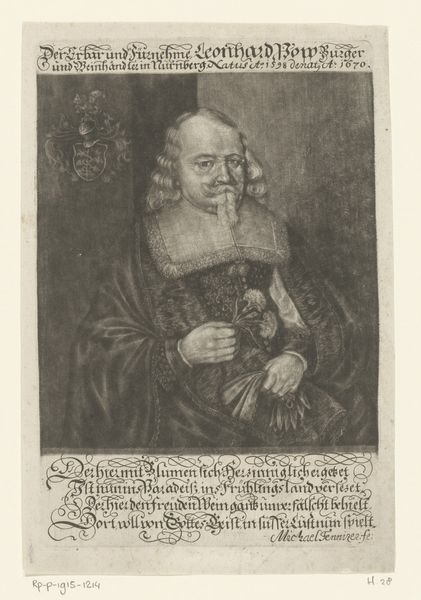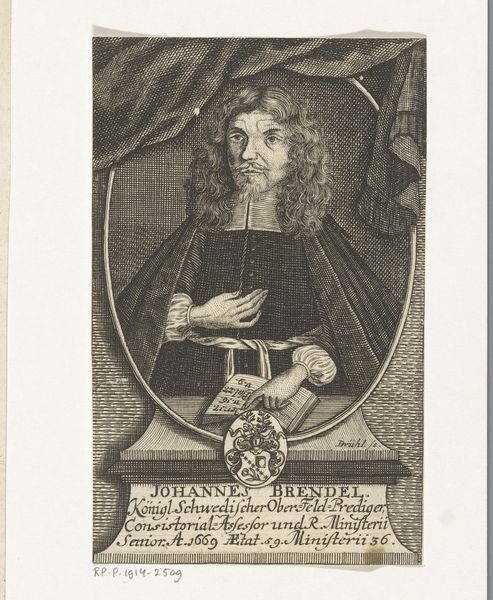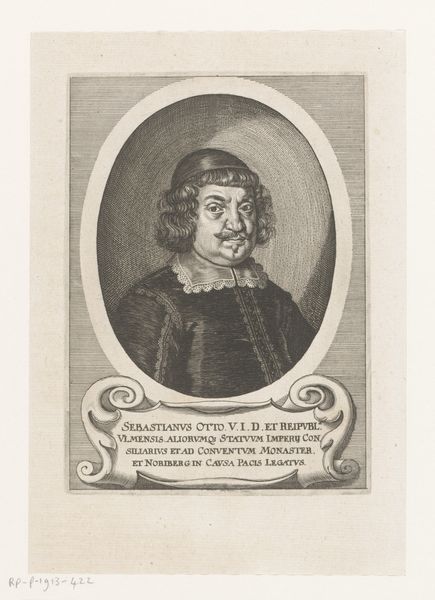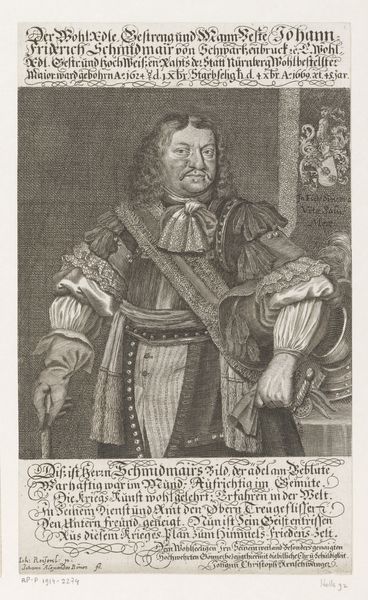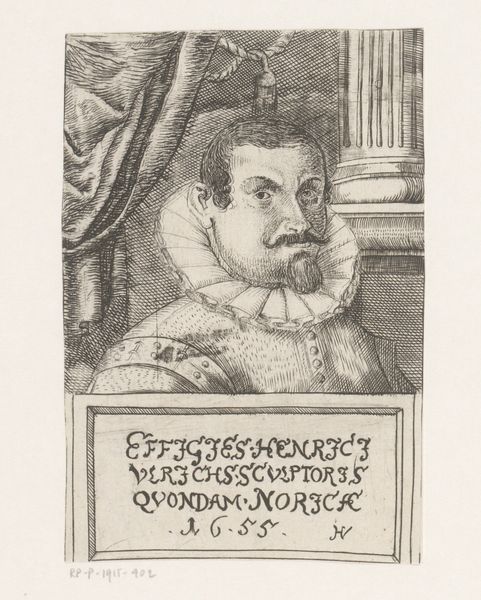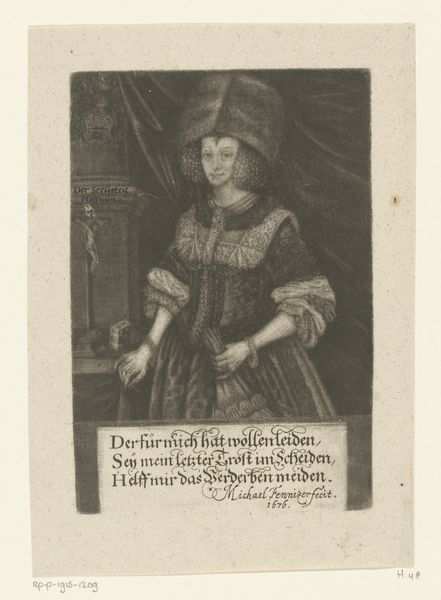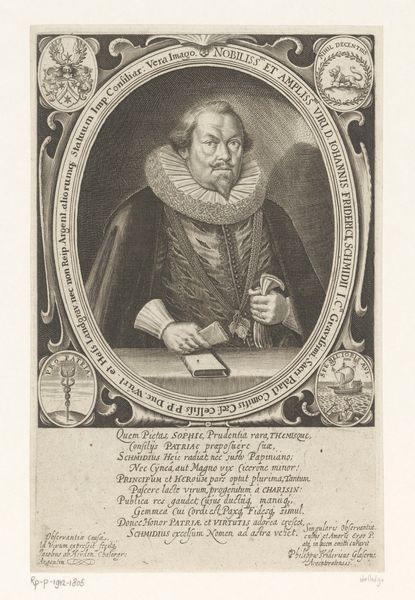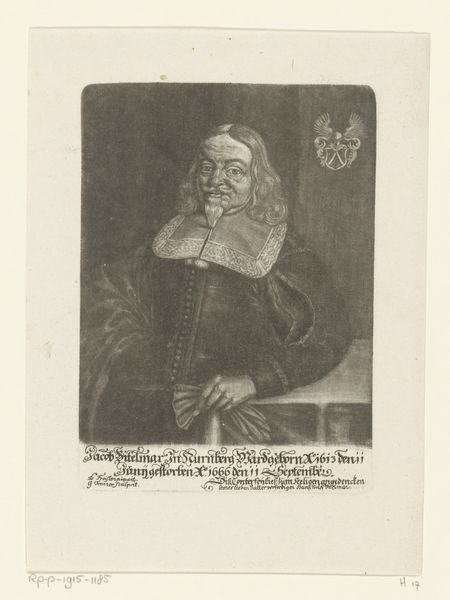
engraving
#
portrait
#
baroque
#
old engraving style
#
history-painting
#
engraving
Dimensions: height 160 mm, width 116 mm
Copyright: Rijks Museum: Open Domain
Georg Fennitzer made this portrait print of Johann Christoph Arnoldt in the late 17th century. The technique used was etching, a printmaking process that relies on acid to bite into a metal plate, leaving behind lines that hold ink. The labor-intensive process of etching is fascinating here. Notice the detailed lines that create the texture of Arnoldt’s clothing and hair, the heraldic crest, and even his facial features. Each line had to be carefully drawn through a wax ground before the acid bath. The crispness of the lines suggests a controlled, deliberate process, reflecting the sitter's status. Etching allowed for multiple impressions to be made, making images more accessible. The work involved speaks to a growing market for portraiture and printmaking in the 17th century, reflecting shifting social structures. It reminds us that even seemingly straightforward images are the product of skilled hand work, ingenuity, and evolving social conditions.
Comments
No comments
Be the first to comment and join the conversation on the ultimate creative platform.
